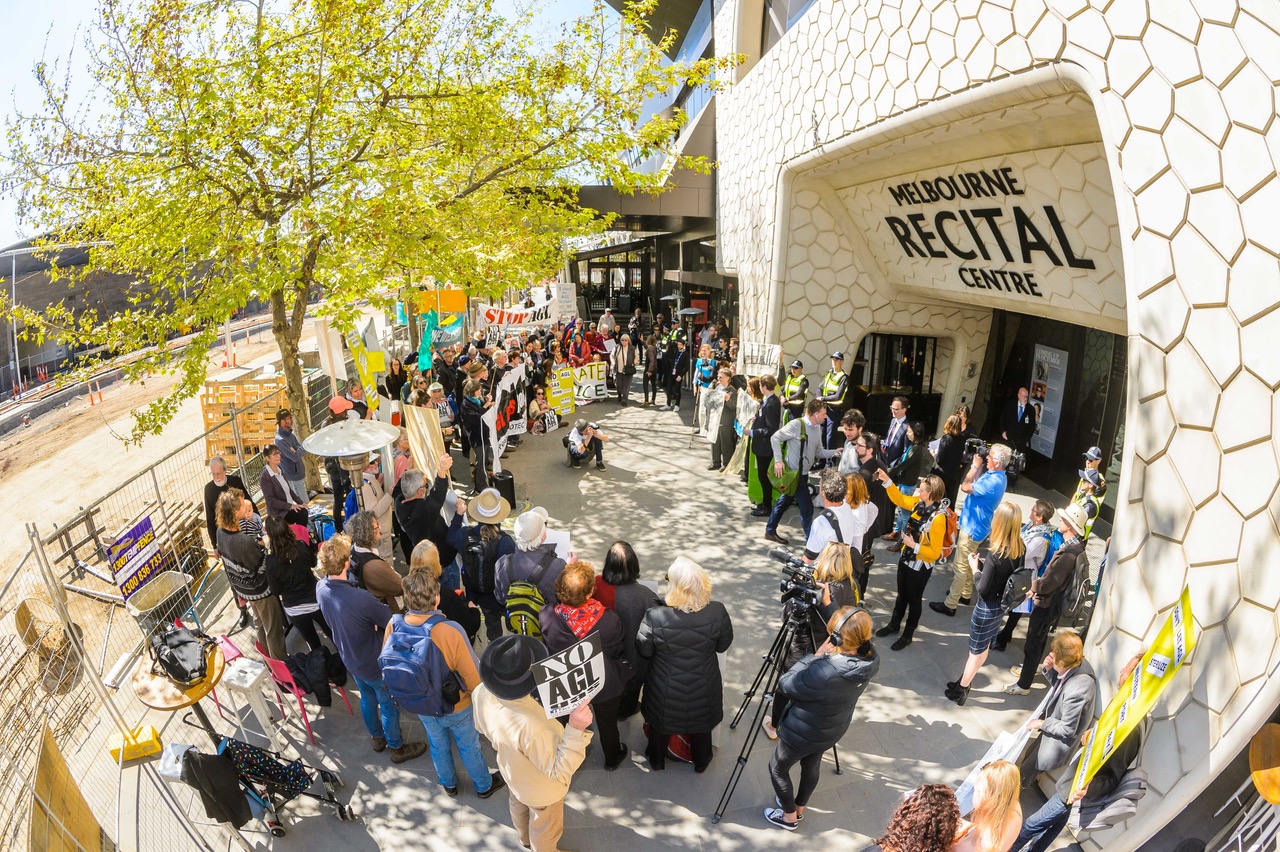
Credit: Julian Meehan
26 September 2018
Today energy giant AGL faced angry community representatives and shareholders at its annual general meeting (AGM) in Melbourne. Most of question time was taken up by the Western Port community voicing their concerns over Crib Point, with the board becoming visibly frustrated at having to engage with the issue. Shareholders also probed the company on former CEO Andy Vesey’s recent abrupt departure, and the implications for closing down the ageing Liddell power station in 2022.
Industry commentators point to Vesey’s strong stance on Liddell as the reason behind his exit. His refusal to compromise on the coal-fired power plant’s closure in 2022 saw him butt heads with the Coalition government, who want to extend its life by an extra 5-7 years. Today, however, AGL confirmed that Liddell would cease operations in 2022 in response to a statement from shareholders backed by $600, 000 of investment. Watch below:
The major focus of the meeting was AGL’s proposed floating LNG terminal at Crib Point, in the Western Port area. The area is a Ramsar-designated wetland of international significance. The energy giant is looking to import LNG into Victoria, however, research clearly shows that gas is not significantly less polluting than coal to garner any climate benefit.
Outside the AGM 70 protesters, including a cohort of community members from Western Port, challenged AGL over its proposed liquefied natural gas (LNG) project in the Crib Point area.
Analysts have warned the gas import terminal will artificially inflate domestic East Coast gas prices. In the interest of managing long term sovereign risk, it seems incongruous that AGL would consider placing a gas terminal in an area with a large established residential community, very high fire danger, and a sensitive, internationally recognised, natural environment. It puts at risk local industries like fishing and natural tourism – which account for 13,000 jobs in the region.
AGL’s board seemed unable to give any clear concise responses to the concerns raised by the community.
The fractious energy debate between AGL and the government has at times made the company look progressive. The reality is far removed. AGL was recently fined $3 million dollars for failing to offset its emissions levels just a week after the regulator threatened to kick it out of the state. Executive Richard Wrightson called the shortfall an oversight – but of the four times the Essential Services Commission has levied fines for such behaviour, AGL has twice been the offender. First in 2014, and now this week, this seems perhaps less an ‘oversight’ than a pattern. The company was unable to give any straightforward information as to what mechanisms are in place to ensure it meets these commitments to the community in the future.
It’s hypocritical for AGL to claim it is ‘focused on delivering affordable, reliable, lower-carbon and innovative energy solutions for all of our customers’. The company remains Australia’s largest emitter of greenhouse gases, emitting 43.4 million tonnes of CO2 equivalent in 2017.
Rather than extend the life of its existing assets and invest in new gas facilities AGL needs to look at alternative methods of power production. Australia’s emissions in 2017 increased for the third consecutive year, approaching all-time high. At this rate Australia will not meet its woefully inadequate 2030 emissions reduction target.
As the country’s largest emitter, AGL must provide the clarity investors and the public need to remain confident in the company’s ability to navigate the transition to a low carbon economy.
Take action.
Does your super fund invest AGL? Find out here
